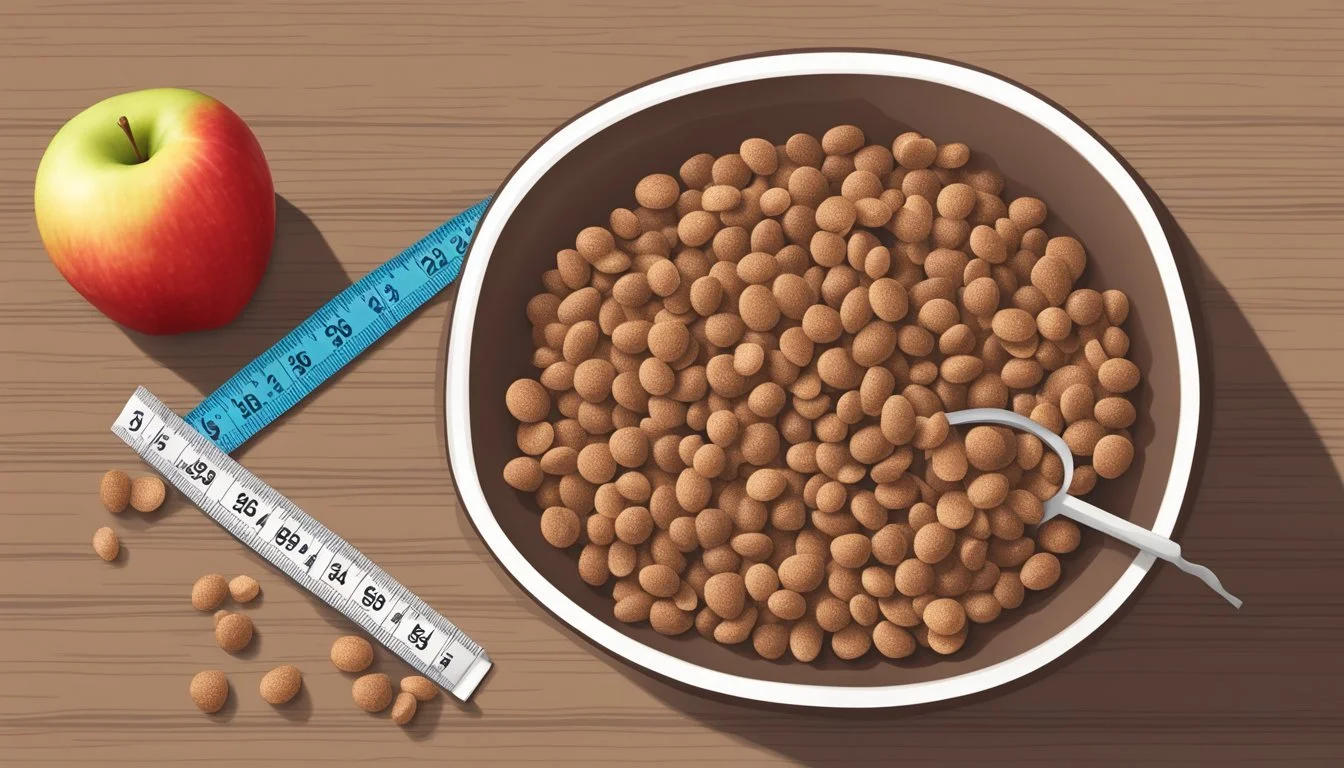Cocoa Pebbles vs Count Chocula
Comparing Two Iconic Cereals
This Article is Part of Our Breakfast Cereal Guide with Details on Cocoa Pebbles Nutrition and Count Chocula Nutrition
Breakfast cereal enthusiasts often find themselves torn between two chocolatey options: Cocoa Pebbles and Count Chocula. Both cereals have their unique appeal, from Cocoa Pebbles’ crunchy texture to Count Chocula’s spooky, marshmallow-laden charm. For those debating between these two breakfast delights, understanding their nutritional and taste profiles can help make an informed choice.
General Mills’ Count Chocula offers a more nutrient-rich profile, with significantly higher iron, zinc, calcium, and vitamin B12 content. This makes it a compelling option for those looking to add some nutritional value to their morning meal. On the other hand, Cocoa Pebbles, with its richer chocolate flavor and higher vitamin A and D content, provides a different kind of breakfast experience, one that takes you back to its nostalgic roots dating back to 1971.
Despite these differences, both cereals deliver a satisfying chocolate flavor and sweetness that appeal to cereal lovers of all ages. Whether you prioritize the health benefits of added vitamins and minerals or the pure joy of a richer chocolate taste, knowing the strengths of each option can help you decide your next breakfast choice.
Profile of Both Cereals
General Mills' Count Chocula and Post's Cocoa Pebbles offer distinctive characteristics. Key differences lie in nutrition and flavor profiles, which are crucial for discerning cereal enthusiasts.
General Mills Count Chocula
Count Chocula is a popular chocolate-flavored cereal from General Mills.
This cereal is notable for its high iron content, meeting around 131% of daily iron needs per serving. It also contains more zinc, calcium, vitamin C, phosphorus, and vitamin B12 compared to many other cereals.
In contrast, Count Chocula has lower levels of saturated fat (0.6g) compared to Cocoa Pebbles, making it a more heart-friendly choice for those monitoring fat intake.
It includes fun, ghost-shaped chocolate pieces that make breakfast enjoyable for kids.
Post Cocoa Pebbles
Cocoa Pebbles, produced by Post, is another favorite among chocolate cereal enthusiasts.
This cereal boasts a higher amount of saturated fat (3.6g) per serving compared to Count Chocula. Nonetheless, it provides essential nutrients like vitamin A RAE and vitamin D in larger quantities. Cocoa Pebbles also contain a good amount of copper, contributing to its distinct nutritional profile.
Its signature crispy texture, small pebble-like pieces, and intense cocoa flavor create a unique eating experience often appreciated by both children and adults.
Nutritional Comparison
Count Chocula and Cocoa Pebbles provide distinct nutritional benefits and limitations. This section highlights differences in caloric content, sugar, protein, fiber, and essential vitamins and minerals.
Caloric Content and Serving Size
Cocoa Pebbles and Count Chocula both differ in their caloric content per serving. A typical serving size for these cereals is around 27 grams.
Cocoa Pebbles: Approximately 110 calories per serving.
Count Chocula: Around 103 calories per serving.
This makes Cocoa Pebbles slightly higher in calories, which might be a concern for those monitoring their caloric intake.
Sugar and Sweeteners
Sugar content is a critical factor for many when choosing a breakfast cereal. Both cereals have a significant amount of added sugars, but there is a variance.
Count Chocula: Contains 13 grams of sugar per serving.
Cocoa Pebbles: Approximately 9 grams of sugar per serving.
The higher sugar content in Count Chocula should be noted by those managing sugar intake, especially for children or individuals with dietary restrictions.
Protein, Fiber, and Minerals
Though not typically high protein sources, both cereals offer some protein and fiber. In terms of minerals, there are notable differences:
Count Chocula: Provides around 1 gram of protein and 0.5 grams of fiber. It is rich in Iron and Calcium, fulfilling 131% and 37% of daily values, respectively.
Cocoa Pebbles: Contains 1 gram of protein and 0.5 grams of fiber, similar to Count Chocula.
However, it does not provide the same high levels of Iron or Calcium, making Count Chocula the better choice for these minerals.
Vitamins and Essential Nutrients
Vitamins are crucial for overall health, and both cereals contain essential vitamins, albeit in varying quantities.
Count Chocula: High in Vitamin C, Vitamin B12, and Zinc, contributing significantly to daily nutritional needs.
Cocoa Pebbles: Higher in Vitamin A RAE and Vitamin D, which can be beneficial for those looking to boost these specific vitamins.
Therefore, while Count Chocula may be the preferred choice for vitamins like C and B12, Cocoa Pebbles might be better for vitamin A and D supplementation.
Taste and Flavor Profiles
Count Chocula and Cocoa Pebbles present distinct taste experiences. Each of these cereals offers a unique balance of chocolate intensity, texture, and sweetness, and both pair differently with milk to create a satisfying breakfast.
Chocolate Intensity
Count Chocula has a rich and creamy chocolate flavor, thanks to its blend of cereal pieces and marshmallows. The cereal delivers a consistent chocolate taste with every bite. Cocoa Pebbles, on the other hand, is known for its strong chocolate flavor derived from its cocoa-infused crispy rice. The intensity can be more pronounced, making it a favorite for those who prefer a strong chocolate taste.
Texture and Mouthfeel
Count Chocula provides a mixed texture experience due to its combination of airy cereal pieces and soft marshmallows. The contrast between the slightly crunchy cereal and the chewy marshmallows adds an interesting textural element. Cocoa Pebbles offers a uniform but satisfying crunch that quickly softens in milk, giving it a different yet enjoyable texture overall.
Sweetness and Aftertaste
Count Chocula balances sweetness well with its marshmallow-cereal combo. The cereal leaves a mild chocolate aftertaste that is not overtly sweet. Cocoa Pebbles tends to be slightly sweeter due to its concentrated cocoa flavor. Its aftertaste is distinctly chocolatey and can linger longer, appealing to those with a sweet tooth.
Pairing with Milk
Count Chocula interacts with milk to create a chocolatey milk mixture that is both creamy and delightful to drink. The milk enhances the overall chocolate experience of the cereal. Cocoa Pebbles transforms milk into a chocolatey drink quickly, providing an intense chocolate milk experience. This characteristic makes Cocoa Pebbles stand out for those who enjoy drinking their cereal milk after finishing the cereal itself.
Both cereals have their unique strengths and cater to different preferences when it comes to chocolate flavor, texture, and sweetness.
Cultural and Historical Significance
Cocoa Pebbles and Count Chocula have both carved unique niches in cereal history. While Cocoa Pebbles mainly gained a foothold through branding linked to beloved cartoon characters, Count Chocula tapped into the allure of monster-themed marketing.
Marketing and Brand Development
Cocoa Pebbles emerged as a unique cereal, leveraging characters from the iconic Flintstones cartoon. This association provided a nostalgic connection for consumers. Launched in 1971, Cocoa Pebbles utilized the popularity of Fred and Barney to create a strong brand presence.
Count Chocula, introduced the same year, was part of General Mills' monster cereals. With a chocolate vampire as its mascot, it used Halloween and horror themes, appealing to children’s love for spooky fun. Franken Berry and Boo Berry joined the ranks, strengthening the monster cereal branding.
Pop Culture Presence
Cocoa Pebbles found its place in households as part of Saturday morning cartoons. The association with the Flintstones ensured its visibility during children's peak TV-watching hours. Advertising on television further cemented its cultural significance.
Count Chocula capitalized on Halloween marketing. Its monster theme was perfect for the fall season, making it a staple on grocery shelves each year. The cereal's mascot, along with Franken Berry and Boo Berry, became synonymous with retro monster fun, enhancing their pop culture status.
Evolution Over Time
Cocoa Pebbles has seen various iterations, including seasonal variants and spin-offs. Despite changes, the core branding tied to the Flintstones remains, ensuring consistent market presence. Innovations in flavor and formula have kept it relevant in a competitive market.
Count Chocula and its monster counterparts faced struggles due to health concerns linked to certain dyes and ingredients. Nonetheless, they persevered, periodically reappearing, especially during Halloween. General Mills often revived these cereals, tapping into nostalgic sentiments and adapting branding to contemporary tastes.
Both cereals have left a lasting impact, showcasing how effective marketing, pop culture ties, and adaptive strategies can secure a place in history.
Dietary Considerations and Health Impact
Both Cocoa Pebbles and Count Chocula cereals provide distinctive nutritional profiles that can influence one's diet and health. Key considerations include the balance of vitamins and minerals, the presence of additives, and the suitability of these cereals for health-conscious individuals.
Health-Conscious Alternatives
For those mindful of their health, cereals with lower sugar and sodium content are preferable. Count Chocula contains 180 milligrams of sodium per serving, whereas Cocoa Pebbles has a lower sodium content. Both cereals have zero grams of dietary fiber per serving.
However, Count Chocula's significant iron content can be an advantage. Health-conscious consumers might opt for alternative cereals like whole-grain options, which offer higher fiber and lower sugar.
Role in a Balanced Diet
Cereals like Cocoa Pebbles and Count Chocula can be part of a balanced diet if consumed in moderation. Cocoa Pebbles is higher in saturated fats, with 3.6g compared to 0.6g in Count Chocula, potentially impacting heart health negatively if consumed excessively.
On the positive side, Count Chocula provides more iron, zinc, calcium, and vitamins such as Vitamin B12 and C. Balancing these cereals with fresh fruits and sources of fiber can enhance their nutritional value.
Concerns Over Additives
Packaged cereals often contain additives and preservatives to enhance flavor and shelf life. Both Cocoa Pebbles and Count Chocula are no exceptions.
Count Chocula includes mouthwatering additives, which may concern those wary of artificial flavors or colors. These additives can lead to increased calorie intake due to sugars or unhealthy fats. Consideration of the types of fats (especially trans fats) and grams of sugar in each serving can help one make informed dietary choices. Reading labels for less processed alternatives will benefit long-term health.
Consumer Preferences and Brand Loyalty
This section looks at the demographics, target audience, and consumer reviews to understand the preferences and loyalty towards Cocoa Pebbles and Count Chocula.
Demographics and Target Audience
Cocoa Pebbles and Count Chocula target similar demographics, primarily children and nostalgic adults. Cocoa Pebbles appeals to those who enjoy fruity and chocolatey flavors. It's often chosen by parents seeking a fun, sugary breakfast option for their kids that also meets their craving for intense flavors.
Count Chocula, which debuted in 1971, has a rich history that resonates with older consumers. Its branding, featuring the cartoon vampire mascot, captures the interest of kids and those who grew up enjoying it. The fortified vitamins and minerals make it appealing to parents looking for nutritious options despite its sugary content.
Consumer Reviews and Ratings
Cocoa Pebbles generally receives positive feedback for its flavor and texture. Consumers appreciate its intense chocolate taste and crunchiness, with many describing it as satisfying and enjoyable. Its higher saturated fat content is noted, but doesn't deter loyal fans.
Count Chocula garners high praise for its unique chocolate taste and lower saturated fat content. Reviews highlight its nostalgic appeal and balanced sweetness. Though it offers higher iron content and other nutrients, some consumers find it less intensely chocolatey compared to Cocoa Pebbles. Nonetheless, its brand loyalty remains strong, particularly among those with fond childhood memories.






